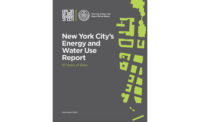With the ambitious goal of reducing its greenhouses gas emissions 30 percent by the year 2030, the City of New York recently completed an inventory of its carbon output from buildings and transportation—and the results weren’t pretty when it comes to buildings, which contribute a whopping 79 percent of the total emissions.
The audit is the most comprehensive ever undertaken by a city. Its findings came as a surprise to some observers, given that New Yorkers, with their tiny apartments and extensive mass transit network, produce about one-third the carbon per capita compared to the national average. Given the city’s population growth—officials expect nearly 1 million new residents by 2030—that means the city has its work cut out for it. “Our view is that if we are going to set a target, you have to be able to track your progress,” says Daniel Doctoroff, deputy mayor for economic development.
The study seems to put the burden for meeting the reduction on landlords, developers, and, yes, architects. But Doctoroff stresses that much of the solution lies in convincing tenants and homeowners to use more efficient technologies such as compact florescent light bulbs and Energy Star appliances. He adds that the majority of the city’s real estate was constructed long before green building standards.
“Eighty-five percent of the buildings that will constitute the city in 2030 currently exist today,” Doctorff says. Still, green building techniques and more efficient transportation, potentially including congestion pricing—similar to a program in London—will play an important role in helping New York meet its target.






Post a comment to this article
Report Abusive Comment